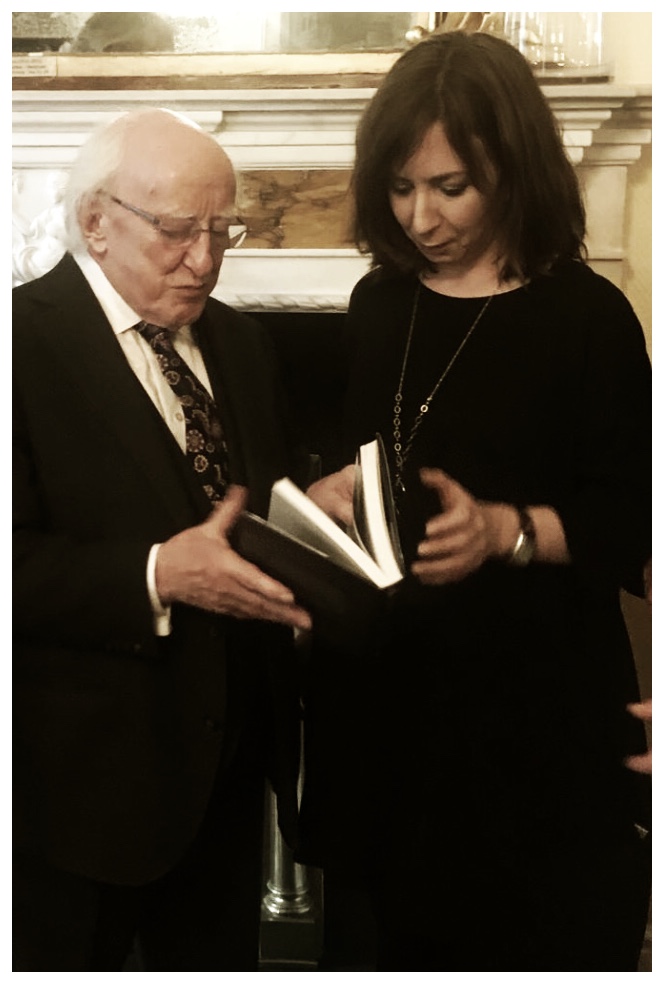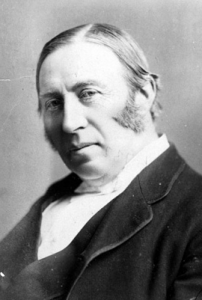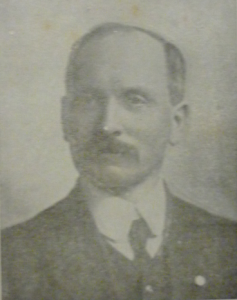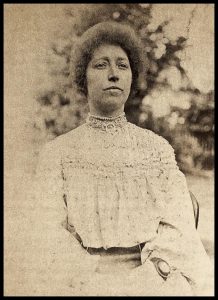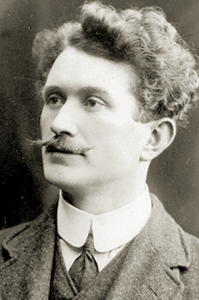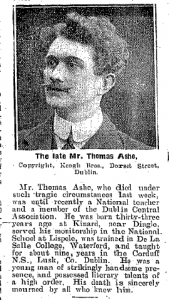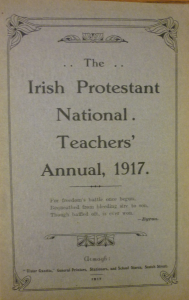from Our War. Ireland and the Great War John Horne (ed.) (2009)
In 1914, when it seemed that a Home Rule parliament was merely months away, the Irish Trade Union Congress added the words ‘and Labour Party’ to its title.
The decision to establish a political wing had been made two years earlier, and but it was only in late July 1914 that it began to organize by appealing for funds to fight in the forthcoming election. The outbreak of war one week later put an end to Home Rule for the time being, and to Labour’s entrance onto the political stage.
Far from hindering Labour’s advance, however, the timing probably benefited the new party, since it is difficult to exaggerate the problems faced by the trade union movement at this point. Established in 1894, the Irish Congress of Trade Unions was a talking shop dominated by elite craft unions with little or no political or industrial influence. New unionism, which saw unskilled and general workers organized in militant unions, such as the Irish Transport and General Workers Union (ITGWU) established in 1909, had grown in the years immediately prior to the war, but the Dublin lockout of 1913 had brutally and decisively ended its upsurge.
Economic impact of the war
The war brought considerable economic gains to Ireland, but these were concentrated in certain areas and sectors. The British war economy was geared towards munitions, supplies and food. Sectors that were well placed to provide for these needs would have a good war but in areas where this was not the case, the results were mixed. Naturally, in Ireland agriculture reaped immediate benefits, with the 1914 harvest receiving the highest prices since the 1880s. But without rationing or caps on food prices, consumers found themselves instantly at a loss. Only weeks into the war, the National Executive of the Irish Trades Union Congress issued a manifesto to the workers of Ireland entitled ‘Why should Ireland starve?’ that called for controls of the food supply and castigated Irish farmers as ‘profit-mongering crows’. ‘To the men of our class who are armed,’ it announced, ‘we say keep your arms and use them if necessary. If God created the fruits of the earth He created them for you and yours’. The militancy of the manifesto was not reflected in any action at the time, however, and this was merely the first of many unheeded calls from the executive on the problem of prices and food.
Apart from food supplies, the main economic contribution to the war effort came from the shipyards of Belfast where Harland and Wolff not only built naval vessels but converted passenger liners into military ships. War work saw the numbers employed in Harland and Wolff increase to around 25,000 while smaller yards also benefited to the point where 37,000 were employed in shipbuilding in Belfast.3 Elsewhere in the north, the linen mills and shirt factories were flat out on military contracts. Between the industrial north-east and prospering farmers, the war ushered in an economic boom.
Yet the boom benefited only existing industries. From the summer of 1915, when the Ministry of Munitions was established, an effort to spur output resulted in national ordnance factories being established across Britain. Ireland, however, was largely overlooked. Home Rule MPs and local pressure groups called for Ireland to be given its ‘share’ manufacturing armaments but in the short term, only a few ‘minor contracts’ were secured.4 It has been suggested that this was because employers in Britain and in Ulster were determined to ‘freeze nationalist Ireland out of lucrative contracts’ to keep the south deindustrialized, but when it came to munitions, northern firms fared no better.
The truth is that there was no practical reason to situate munitions factories in Ireland and there were significant logistical and security reasons why it would be quite inadvisable. By the winter of 1917, only five National Factories had been established in Ireland in Dublin, Waterford, Cork and Galway, employing 2,148 people. Most of these munitions workers were women since the government was determined that the creation of new jobs should not deter men from signing up. The contract signed by the Dublin Dockyard company, for instance, stipulated that not more than five percent of the total staff could be men or boys. In other factories, the proportion of men was greater, but women, doing the unskilled work, remained in the majority. It is hard to overestimate the comparative significance of the low level of munitions output in Ireland: what in many other wartime societies proved one of the most dynamic developments, affecting everything from gender relations (with the ubiquitous munitionnette) to the power and political clout of organized labour, was largely absent.
Yet Ireland did share in the wider phenomenon of economic uncertainty in the first few weeks of the war. In most cases, the fall in demand was temporary, but the drinks industry was hit more seriously. Excessive alcohol consumption was an issue which concerned most combatant states, and was a particular preoccupation of David Lloyd George who was Chancellor of the Exchequer in 1914-15. Believing that ‘munitions and materials are even more important than men,’ Lloyd George felt that excessive drinking was diminishing their quality and output and he highlighted in particular the mischief caused ‘in northern yards’ by ‘the drinking of raw, cheap spirits of a fiery quality’. On 29 April 1915 he announced to the Commons that he planned to introduce super-taxes on whiskey, beer and wine in an effort to curb demand. In 1912, the brewing and malting sector was the largest industrial contributor to gross domestic output in the twenty six counties, and distilling was also an important employer. In Dublin, Guinness had a workforce of around 3,500. In the event, the super-taxes were shelved in favour of the compulsory bonding of all spirits under three years of age under the Defence of the Realm Act. There followed legal efforts to curb consumption such as the reduction of opening hours in public houses and a ‘no treat order’ which prohibited buying rounds as well as further restrictions on output, which included the Output of Beer (Restriction) Act in the autumn of 1916 and at its most extreme, the complete closure of pot distilleries such as Powers in 1917.13 By 1918 Irish brewing output was half the level of 1916.
These actions led to large scale redundancies not only in the breweries and distilleries but also their suppliers. For instance, one round of restrictions introduced in 1917 resulted in 300 men being let go at the bottle works at Ringsend. Those lucky enough to remain employed were left in a profoundly insecure position, only one food order away from destitution or the front.
Recruiters were quick to exploit this insecurity. The Director of National Service in Ireland assured the thousands of men threatened with the loss of their jobs that he was ‘anxious to find employment for them’ but was ‘still unable to present any definite prospect of it’. Sir Bryan Mahon, Lieutenant-General Commanding in Chief of the Forces in Ireland stepped into the breach and in a public letter to the Irish Times declared that ‘their services will be gladly accepted in the ranks of any of our Irish regiments, or, if skilled workers, in […] technical corps.’ He also brought their attention to increased separation and dependents allowances ‘which together with their pay, food, clothing etc, will be found to compare favourably with the amount they would receive in civil employment.’
Of course, even without the additional push factors of the war, the economic impetus to enlist was very strong, not least since the conflict broke out only six months after the Dublin lockout had ended. The lockout had exacted a heavy toll on the ITGWU as an organization but even more so on its members. The union, under the direction of James Connolly, was vehemently opposed to the war and waged a vigorous campaign against its members joining up. It was difficult to compete with the inducements which the recruiting officers put before them, which included the promise of a steady army income, along with separation allowances for their families. Amidst the efforts to appeal to men’s patriotism in the enlistment campaign, the financial benefits for their families were prominent.
By the spring of 1915, some 2,500 members of the union, amounting to nearly half its membership at the time, had enlisted and one officer in the 16th Division noted that many of the men signing up were ‘real toughs […] Larkinites enticed to join the colours by the prospect of good food and pay, which was welcome to them after months of semi-starvation during the great strike of 1913 and 1914’. The over-representation of working class soldiers in the ranks was noted unfavourably by Irish recruiters. They feared the numbers of labourers enlisting was falling because the latter resented the failure of the farming and commercial classes to ‘share the burden of the war’ but that this was due to the dominance of the working class soldiers putting off middle class recruits.
‘We are satisfied that a much larger number of recruits could be obtained from the [farming and commercial classes] if it were not for their reluctance to enter upon their training with recruits from the labouring classes. This class prejudice is probably much more pronounced in Ireland than elsewhere in the United Kingdom.’
Industrial relations and the labour movement
Socialist and labour organizations across Europe had condemned the slide towards militarism in the years before the war. When the war actually broke out, however, deep divisions emerged. Those who continued to oppose the conflict were in the minority, while the majority rowed in behind their respective governments. In this, the parliamentary Labour Party in Britain was typical, with the British Trade Union Congress committing itself to industrial peace for the duration of the war.
The situation in Ireland, however, was quite different. There was a split on the war but it was based on nationalist rather than socialist lines and opponents of the war were very much in the majority in the labour movement. While unionist organized labour for the most part supported the war, nationalist trade unionists viewed the conflict as a British war against a British enemy; as James Connolly often pointed out in his speeches and journalism at this time, unlike Britain, Germany had never done Ireland any harm. As the banner on the front of the ITGWU headquarters in Liberty Hall put it: ‘We serve neither King nor Kaiser, but Ireland’. The Irish Trade Union Congress was an all-Ireland body, and splits on political questions were avoided when possible, with the result that while Congress’s executive was clearly against the war, it was less strident than might be expected. The desire to avoid disagreement actually led to the 1915 annual congress being cancelled.
Nevertheless, while Congress wished to avoid internal discord over the war an industrial truce was out of the question given the importance of war-related issues, notably conscription and inflation. Although the government did not impose conscription on Ireland in 1916, the Irish unions identified economic conscription (meaning various controls on workers) as almost equally pernicious. When the Dublin Chamber of Commerce met in September 1914, their president, Richard K. Gamble impressed upon the businessmen the need for employers to encourage and facilitate the enlistment of their workforce by keeping their jobs open on their return from war and explaining to them that the uncertainty of trade during the conflict meant that they could not be assured that they could retain their jobs if they stayed. Many companies did so, and also offered considerable allowances to the families of men who joined up, although some employers took a more active approach by dismissing workers in an effort to compel enlistment.
The other issue which occupied the labour movement was workers’ welfare and specifically the problems caused by the continued rise in the cost of living. Congress campaigned against soaring food prices to little avail, but when the unions eventually moved on wages, they met with greater success. Before war broke out, organized labour had been, in David Fitzpatrick’s description, ‘abnormally docile in every sector of industry.’ Although the ITGWU was still struggling under the debts and low morale left by the lockout, circumstances began to swing in the workers’ favour in 1916 due to two factors.
First was a radical change in how industrial relations operated. Under the 1915 Munitions Act, strikes in war factories were banned outright while all other industries required three weeks notice and disputes were put to mandatory arbitration. Although the legislation frightened the unions at the beginning, its benefits soon became obvious. The act forced employers to the bargaining table where otherwise they might have resorted to a pre-emptive lockout or simply waited for the strike pay to run out, which inevitably it did. The Munitions Act meant that the number of strikes increased, but so too did the negotiations and settlements. Unsurprisingly, the act was fiercely resented by employers, who complained that bureaucrats were meddling in their businesses, while on balance the results for labour were positive. For the unions, nothing succeeded like success. Compulsory arbitration created an entirely new momentum in the movement and membership snowballed. For instance, when a strike by Irish railwaymen in November 1916 resulted in the national control of the Irish railways and the payment of a war bonus, membership of the National Union of Railwaymen shot up from 5,000 to 17,000.
The second key wartime development was the growing scarcity of manpower which, as in other belligerent states, reinforced the bargaining power of organized labour – even in the absence (in the Irish case) of a major munitions sector. The labour market tightened further with the introduction of conscription in Britain in 1916. Membership of the ITGWU expanded from 5,000 in 1916 to 120,000 by 1920, while the numbers in craft and clerical unions also grew significantly, so that by 1920 Congress represented 225,000 workers compared with 100,000 in 1916.
Along with membership, militancy was also on the rise as workers threatened or engaged in strikes in the face of strong wartime inflation. In a single day in October 1916, for instance, the Irish Times reported a threatened strike by bakers and strikes by gasworkers, grave diggers and coal porters in Dublin, although a strike by railwaymen on the Great Southern and Western had just been resolved.28 Members and militancy in turn fed the proliferation of trade union organizations – a development that was particularly evident in the ITGWU once the Rising had been crushed and Connolly’s preoccupation with the politics of nationalist insurrection ended in his execution.
The combination of farming profits, labour shortages and state regulation also extended labour organization into the normally quiescent sector of the landless agricultural workers. The Corn Production Act to establish guaranteed prices for wheat and oats was introduced in January 1917 and finally became law in August. Its progress through parliament had been hindered by conservative farming interests who opposed its provisions for a minimum wage for agricultural labourers which would be looked after by an Agricultural Wages Board, as well as capping workers’ hours and rent, so that farmers could not recoup the higher wages by hiking up their workers’ accommodation costs.
Farm workers had were difficult to organise, but the establishment of the Agricultural Wages Board provided the ITGWU with an opportunity to make a breakthrough. In spring 1917 it declared the organization of the agricultural workers to be a key objective, and by the autumn, new members flocked into the union. Even if some felt that the Wages Board rates were too low, market forces pushed up pay as the government made it compulsory to switch to tillage in order to increase the food supply, with the result that demand for farm labour became even tighter than before. The wages movement in agriculture only matured in 1919 but wartime conditions had provided the spur for effective organization of one of the largest and most exploited sectors of the Irish workforce. By 1920, 60,000 agricultural workers belonged to the ITGWU.
Women workers also benefited from the war, including those in historically under-organized industries, such as linen. In 1914 the Belfast-based Textile Operatives Society of Ireland and the Flax Roughers and Yard Spinners had a membership of 3,000 – about one tenth of its potential membership at the time – but by the end of the conflict, the two unions had a combined membership of some 20,000. The smaller new sectors were also represented, with women working in the munitions industry being represented by the London basedNational Federation of Women Workers which also represented women in the food processing industries as well as textiles. Another British based union, the Amalgamated Society of Tailors and Tailoresses, which had recently (if reluctantly) expanded into garment factories, represented thousands of women workers in Ireland by the war’s end.
In contrast, the Irish Women Workers’ Union, the sister union of the ITGWU, failed to expand its organisation or membership to any significant degree. Like the Transport Union it had been hard hit by the lockout, but it was also ravaged by personality disputes and distracted by national issues, to the point where it failed to make a similar recovery.
Overall, the struggle to organize industrially and to raise wages was a success. Practically every section of the workforce secured wage increases, often through negotiation, even if these still trailed the cost of living. Workers also dealt with the problem of profiteering in food supplies by establishing cooperatives such as the ‘Workers’ Bakery’ formed by locked-out bakers in Tralee, which widened their sphere of activism and broadened their tactics. Indeed, this period saw a significant rise in local cohesion with the formation of trades councils in most towns across the country. Efforts to overcome the food crisis in effect broadened the awareness, diversified the activity and strengthened the solidarity of the labour movement.
The politics of labour and the anti-conscription campaign
The labour movement had been tangentially involved in the crisis of nationalist politics provoked by the Rising in 1916, most notably through the leadership of Connolly and the role of the Irish Citizen Army. Nineteen seventeen, the year of the failed socialist peace conference at Stockholm and of the two Russian revolutions, which culminated in Lenin taking Russia out of the war, affected the more radial Socialists. In early 1918, for example, the Socialist Party of Ireland (SPI), founded by Connolly long before the war and re-established after the first Russian Revolution in 1917, celebrated the November Revolution with a mass meeting in Dublin’s Mansion House at which around 10,000 people ‘hailed with delight the advent of the Russian Bolshevik Revolution’.38 The SPI proclaimed that the revolution had ‘fearlessly challenged the British people to loosen its grip upon Ireland.’ But in 1918 what loosened Britain’s grip was not radical socialism (a distinctly minority cause in Ireland) but a renewed crisis of nationalist politics.
Russia’s withdrawal from the war and the punitive peace imposed by the German military on the Bolsheviks the following March paved the way for the Kaiser’s last throw – the spring offensive in the west whose initial blow fell on British troops, including the 16th (Irish) and the Ulster (36th) Divisions, provoking the collapse of the Fifth Army. The political impact of this military crisis on Ireland was acute and instantaneous as the Cabinet decided that conscription must now be imposed on Ireland in a desperate search for more soldiers to stem the danger of a German victory. The British Labour members of the government warned against extending conscription to Ireland before Home Rule had been introduced, but the upshot was a compromise whereby Lloyd George tied conscription to the renewed promise of Home Rule.
In Ireland itself, conscription on any terms was unacceptable both to the Irish MPs and to nationalist opinion, so its eventual introduction without reference to Home Rule in April 1918 merely compounded the sense of anger in the country. The Irish Trade Union Congress was at the forefront of national resistance, joining with the Irish Parliamentary Party, the All-for-Ireland League and Sinn Féin in the anti-conscription conference in the Mansion House, while the Catholic hierarchy actively supported the campaign. In a clear echo of the Ulster Solemn League and Covenant of 1913, the Mansion House conference drew up ‘Ireland’s solemn League and covenant – a national pledge’ which vowed that conscription would be opposed ‘by the most effective means at our disposal.’
The united front was vitally important in this campaign, but Congress also worked alone, using both its political contacts and industrial strength to good effect. Relations between the British and Irish labour movements had deteriorated during the 1913 lockout after Jim Larkin had failed to convince the British unions to come out in sympathetic action for the Dublin workers, and were never effectively rebuilt afterwards. Now the channels of communication were opened once again over the issue of conscription. On 10 April, the day after the bill had been introduced in the Commons, Thomas Johnson and Cathal O’Shannon had travelled to London to meet members of the British Trades Union Congress executive to discuss the matter. This resulted in a statement of support from the British body, though it clearly had little effect on the passage of the bill and there was some resentment that only a handful of Labour MPs had voted against the measure. Efforts to engage Labour’s fraternal links did not end there, but the Irish unions decided a show of strength would prove more effective.
On 20 April 1,500 delegates at a special Labour convention backed a call to hold a general strike three days later on Tuesday 23 April. One of the first general strikes to take place in western Europe, the action was ‘most complete and thorough’ with only banks, the law courts and government offices operating that day.43 Because the issue was not industrial and because the politics were those of nationalism, not socialism, many employers backed their workers, although some threatened lockouts or even dismissal if employees participated. The success of the strike was remarkable, not least because it was organized so rapidly and effectively despite heavy press censorship. Workers protested at hundreds of meetings across the country, including 30,000 in Cork city, although fear of retaliation by the authorities inhibited gatherings in Dublin. The call to strike had been heeded almost universally with one vital exception. In the north east it was business as usual. Belfast and its surrounding counties were committed to the war effort and the cleavage on the issue that Congress had worked so hard to avoid opened up.
The united political and religious front, the signing of the anti-conscription pledge by hundreds of thousands, and the success of the general War, work and Irish labour strike made the depth of opposition quite clear. In a misguided effort to convince workers to abandon their stance, the pro-war Labour MP and general secretary of the National Union of Railwaymen, J. H. Thomas, came to the Mansion House in Dublin to address members on the advisability of conscription – and met with a predictable response. When Irish Labour representatives travelled to London the following day, they fared a little better, convincing British Labour to issue an appeal against conscription in Ireland ‘on the grounds of principle and expediency alike’ and arguing that ‘the passage of the Conscription Act has done more to cement the National unity than any other act could have done.’ British Labour was unable to influence the government but its diagnosis was accurate. The strength of resistance made it impossible to impose conscription in Ireland, and while the Irish labour movement was only one component of the campaign, the strength conferred on it by the war economy endowed it with vital muscle for the nationalist cause. The relationship, moreover, proved reciprocal as the success of the strike further boosted ITGWU membership.
The period following the strike represented the zenith of trade union membership and confidence in Ireland, and when the annual congress of the ITUC met in Waterford that August, the atmosphere was electric. The strike seemed to have shown labour’s potential and as the chairman William O’Brien told delegates,
‘we shall not hurriedly neglect that lesson […] that a solid, united and determined working class acting as one man […] can bring to a standstill the whole industrial life of the country and all government.’
Bolstered by recent events, Congress decided to renew its political action, renamed itself the Irish Labour Party and Trade Union Congress, and mandated the National Executive to draft a new constitution. In early September, the executive decided to field candidates in the election that would follow the war. By the time the conflict had ended, however, and the country went to the polls for the first time in seven years, Labour had withdrawn from the contest rather than stand against Sinn Féin.
In conclusion, the Great War both transformed the situation of the Irish labour movement and delivered some harsh lessons on its margins of political manoeuvre in a society still divided more by nationalism than class. By comparison with Britain and other major industrial societies, the war had relatively little impact on the nature of the Irish economy. Crucially, there was no break-neck expansion in engineering, chemicals and metallurgy – the industries of the post-war future – and no industrial transformation of the relatively unindustrialized bulk of the country. Nevertheless, labour’s position at the end of the war was incomparably stronger than before the conflict. The rise in prices and the unequal benefits derived from the war-time economy encouraged workers to organize and take action, while legislation, particularly the Munitions Act and the Agricultural Wages Board, compelled employers to participate in the processes of industrial relations where workers’ demands had previously been ignored with impunity. This increased labour organization and revived militancy in a movement that had been shattered following the lockout.
Ireland was a semi-detached part of the United Kingdom, which made it a semi-detached society in the war. Although some 210,000 Irish men fought in the conflict, the war did not have anything like the same impact on Irish society as a whole as it did in Britain. Britain and Ireland differed not only in the extent to which the war changed society but also in the nature of that change. Although it ought not be exaggerated, the war had a something of a levelling impact on British society since four years of bloodletting created, as Jay Winter has noted, ‘a bond of bereavement which transcended distinctions of class or caste’.
This is not to suggest that the war ended class distinctions – far from it. The sacrifice of war opened the way for a new era of social reform and socialist reformism – the idea of establishing a ‘land fit for heroes’. This contributed to Labour’s displacement of the Liberals as the alternative force in British politics and to the achievement of a goal unthinkable only ten years earlier – the Labour-led government of 1923-1924.
There were no echoes of this in Ireland. The Home Rule parliament that might have provided a framework for it never materialized. Conscription was never enforced because by 1918 it represented for most nationalists the imposition of a blood-sacrifice not by the Irish nation but by a foreign state. Yet without it, enlistment patterns outside Ulster tended to divide along two lines: religion and class. In effect it was Protestants and working class men who joined the colours while middle class Catholics for the most part abstained. Rather than a ‘bond of bereavement’ being established in Ireland, the war actually widened the divisions between the classes.
The Irish experience of the Great War as a war fought by certain classes and not others was also reflected in the impact of the conflict on Irish workers at home. The war boosted the agricultural economy and provided large profits in certain industries, but it was working class families who bore the brunt of food shortages and increased prices as wages failed to keep pace with war time inflation. It was precisely this situation, and the action of workers to tackle it, that brought the Irish trade union movement back from the brink to its strongest position yet. However, in the unresolved crisis of Irish relations with Britain, this industrial power (and the distinctive ‘syndicalism’ to which it gave rise) could not readily be translated into an autonomous Labour politics, let alone radical Socialism. As war ended, the Congress party began to prepare once again to step onto the political stage, from an apparently far stronger position than in 1914.
This time it was organized, this time it was ready. But Labour was prevailed upon to stand aside by Sinn Féin. Had it not done so, who can say how it would have fared. But unlike the false start in 1914, this was a setback from which Labour would never recover.
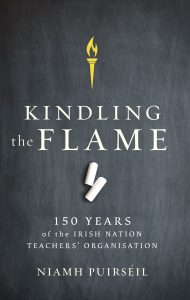 This is a finely researched and readable account of multiple struggles over 150 years, in which themes of politics, class, gender and power are deftly interwoven through the story of the Irish National Teachers’ Organisation.
This is a finely researched and readable account of multiple struggles over 150 years, in which themes of politics, class, gender and power are deftly interwoven through the story of the Irish National Teachers’ Organisation.